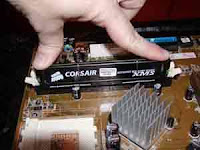Every piece of software, from a simple word processor, such as Microsoft Notepad, to the most advanced image editing programs, such as Adobe Photoshop, is made by one or more computer programmers who use a programming language that tells a computer how to act. Programming is a highly complex subject that covers many different types of languages and can be used to solve a huge range of problems.
History
 The earliest instance of programming with modern computers occurred in the early 1940s when the mathematician John von Neumann designed a system that allowed for the digital computation of data within the random access memory of a computer. The first computer programs were created by entering the strings of ones and zeros that make up binary code. Low level programming called "assembly codes," which directly access a computer's hardware, were then invented that allowed text commands to be entered which took the place of binary. Assembly languages are specific to each type of hardware, so the next logical step was the invention of a language called "FORTRAN' which was hardware independent and could be used to write programs for any type of computer. The most frequently used modern programming languages are "C++" and "C#" which both have significantly more features and are much easier to read than early programming languages.
The earliest instance of programming with modern computers occurred in the early 1940s when the mathematician John von Neumann designed a system that allowed for the digital computation of data within the random access memory of a computer. The first computer programs were created by entering the strings of ones and zeros that make up binary code. Low level programming called "assembly codes," which directly access a computer's hardware, were then invented that allowed text commands to be entered which took the place of binary. Assembly languages are specific to each type of hardware, so the next logical step was the invention of a language called "FORTRAN' which was hardware independent and could be used to write programs for any type of computer. The most frequently used modern programming languages are "C++" and "C#" which both have significantly more features and are much easier to read than early programming languages.Function
- All of the computer software that you use or video games that you play are created by entering lines of code into a program called a compiler which tells a computer system how to interpret the code and what to do with it. The compiled code is then transferred from the text files that it was created as into an executable file that can be opened by the computer user.
Features
- Programming languages work by defining variables, such as the number of lives that a game character has or the amount of letters in the alphabet for a text program, and then declaring statements that utilize or change those variables. Each programming language has different terminologies for how variables and statements must be declared, how large a variable can be, and the different types of variables that can be used, such as numbers, letters or strings of letters.
Types
- There are four main types of programming languages and each has benefits in different situations. Declarative languages are the most simple as they only define what a program is meant to do but do not worry about things like managing memory or controlling the flow of the program. Functional languages do not change variables but rather just work with states that remain unchanging. Imperative languages work by frequently changing the state of the program or its variables. The most complex type of programming language is known as "object oriented" because it is used to create fully functional objects which have many different characteristics and variables and all interact with each other to execute a program. Markup language, such as HTML, can also be considered a programming language, although it only defines how to display information on a web browser and does not actually declare statements or define variables.
Considerations
- Writing a computer program can be a highly complex and daunting task even if you are using the most simple type of language. All programs should have a separate section meant to handle errors, such as what the program should do if the user inputs incorrect information or if two statements conflict with each other. Memory management is also an extremely important aspect of programming so that the software does not completely take over the computer's memory and cause everything else to run very slowly or not at all. There are large libraries of pre-programmed options, such as the Standard Template Library for C++, that you can use to quickly solve problems that many other programmers have had to deal with before you.
Examples of Computer Programing Languages****************************************************************************************



































